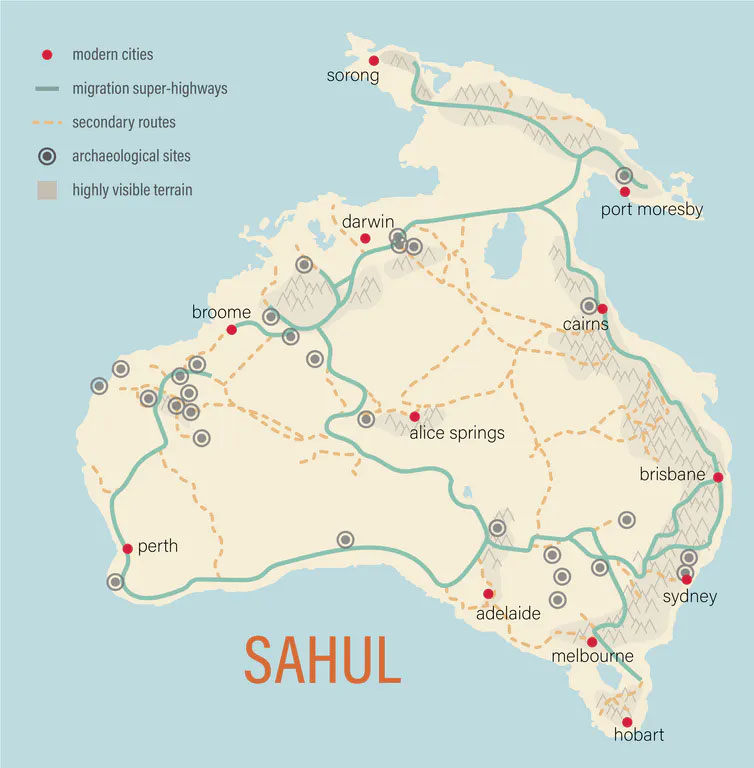
'Superhighways' used by a population of up to 6.5 million Indigenous Australians to navigate the continent tens of thousands of years ago have been revealed by new research using sophisticated modelling of past people and landscapes.
The new insights into how people not only survived, but thrived, in harsh environments provide further evidence of the capacity and resilience of the ancestors of Indigenous people, and help paint a picture of large, well-organised groups navigating tough terrain.
The 'peopling' of Sahul - the combined mega continent that joined Australia with New Guinea when sea levels were lower than today - could have taken as little as 5,000 years as people moved from the far northwest, all the way to Tasmania in the southeast.
Models also predict that the total population of Sahul could have reached as much as 6.5 million people, according to the studies led by researchers from the Australian Research Council Centre of Excellence for Australian Biodiversity and Heritage (CABAH).
Many Aboriginal cultures believe people have always been here, while others have strong oral histories of ancestral beings arriving from the north.
While there are many hypotheses about where, how and when Indigenous Australians first settled in Sahul, archaeological evidence is scarce.
Now, a group of multidisciplinary experts have collaborated to investigate these questions using state-of-the-art modelling techniques, with the findings published in two companion papers in Nature Communications and Nature Human Behaviour.
Real-world data about long-distance dispersal of people, human survival, fertility rates and the chance of natural disasters were used in combination with principles of human ecology and behaviour and with anthropological, ecological and environmental data to model the peopling of Sahul, in the Nature Communications study led by Professor Corey Bradshaw, CABAH Chief Investigator at Flinders University.
Data for the 10 million km2 super-continent were used to develop a simulation model and run more than 120 scenarios to predict population size and growth rate. Strongest support was found for the arrival of people 50,000 or 75,000 years ago, with the average establishment rate of 1 km per year emerging from the model giving rise to a maximum population of up to 6.5 million people.
"Guided by Indigenous knowledge, we are coming to appreciate the complexity, prowess, capacity and resilience of the ancestors of Indigenous people in Australia," Professor Bradshaw said. "The more we look into the deep past, the more we understand that many people have long underestimated the ingenuity of these extraordinary cultures."
To investigate travel pathways across Sahul, an international team of archaeologists, anthropologists, geographers, ecologists, geneticists, geologists, and computer scientists built the most complete digital elevation model ever constructed for the continent, including areas now underwater.
The model featured in the sister paper in Nature Human Behaviour allowed researchers to understand what early people would have seen - particularly prominent land features within a relatively flat landscape. Other factors, including the physiological capacity of people, difficulty of the terrain, and availability of water were also included.
CABAH: We mapped the 'super-highways' the First Australians used to cross the ancient landhttps://t.co/0hTiPPTe24






